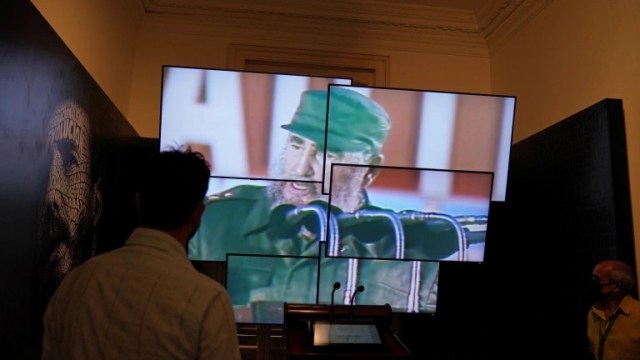
In a city of crumbling buildings where the roots of jaguey trees break through the pavement, one of Havana’s grandest mansions has been restored to shimmering beauty in the name of Cuba’s most contentious son.
By Aljazeera – Ruaridh Nicoll
Dec 2, 2021
The Centro Fidel Castro Ruz opened last weekend in grounds filled with 10,000 plants from more than 1,300 species, three years after work was begun and five years to the day after the Cuban leader died.
At a ceremony attended by Venezuelan President Nicolás Maduro on November 25, Fidel’s brother Raul, 90, welcomed the new museum, calling it “the most exciting thing I’ve seen in my life”.
The opening comes at a time when Cuba is struggling to get back on its feet amid a pandemic and as economic woes are growing under government mismanagement and the 60-year-old US embargo.
It also comes as the government is celebrating stifling much-heralded protests that had been planned in mid-November.
Two blocks from the museum, a queue forms every day for people buying food. When asked, Yanet Hernandez said she hadn’t heard about the new centre but had been waiting two hours to get basic necessities. “Fidel wouldn’t have allowed this,” she said.
The museum
The grounds of the centre contain a 190-seat theatre and an exhibition space. In the garden, a fountain pours onto rocks brought from Rio La Plata, a river whose source was in the mountains where Fidel had his first command post in 1958 as head of the rebel army.
There is a section for plants gifted by “paises amigos”, friendly countries such as Venezuela, whose leader Hugo Chávez came to Cuba’s aid after the economic crisis that followed the collapse of the Soviet Union.
The house itself, on one of the finest avenues in the leafy barrio of Vedado – “the heart of the city”, according to the designers – once belonged to the socialite Lily Hidalgo Borges.
Stained glass windows, colonial tiling, hardwood stairs and filigreed wooden doors have all been carefully restored. Hidalgo Borges was married to Enrique Conill, a banker with a tobacco fortune, but the family fled to the United States after the Cuban revolution.
Now the rooms offer presentations such as “Fidel is Fidel”, in which projections of Chávez, poet Roberto Fernández Retamar and the great restorer of Old Havana, Eusebio Leal, all of whom are also now dead, pay tribute.
…
Read More: Aljazeera – ‘We can dream’: Inside Cuba’s new Fidel Castro museum
…

